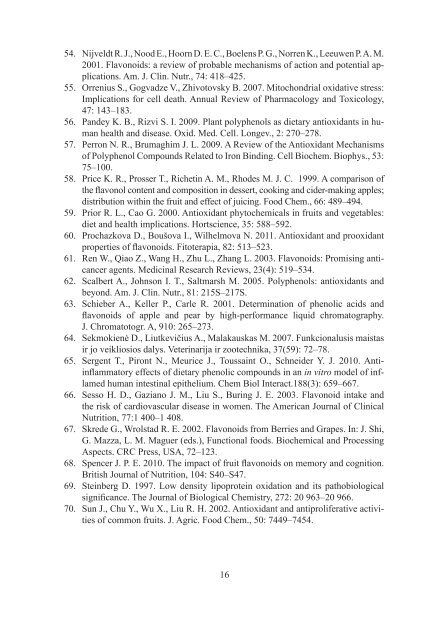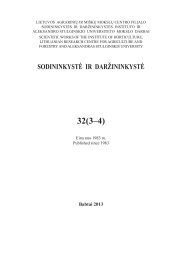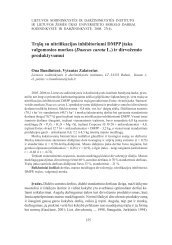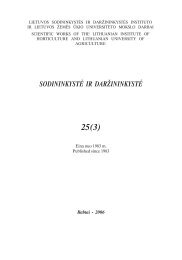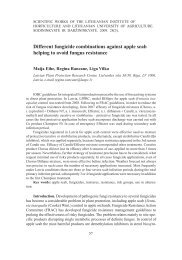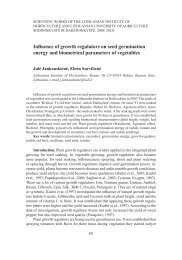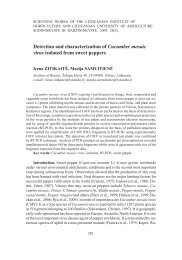54. Nijveldt R. J., Nood E., Hoorn D. E. C., Boelens P. G., Norren K., Leeuwen P. A. M.2001. Flavonoids: a review of probable mechanisms of action and potential applications.Am. J. Clin. Nutr., 74: 418–425.55. Orrenius S., Gogvadze V., Zhivotovsky B. 2007. Mitochondrial oxidative stress:Implications for cell death. Annual Review of Pharmacology and Toxicology,47: 143–183.56. Pandey K. B., Rizvi S. I. 2009. Plant polyphenols as dietary antioxidants in humanhealth and disease. Oxid. Med. Cell. Longev., 2: 270–278.57. Perron N. R., Brumaghim J. L. 2009. A Review of the Antioxidant Mechanismsof Polyphenol Compounds Related to Iron Binding. Cell Biochem. Biophys., 53:75–100.58. Price K. R., Prosser T., Richetin A. M., Rhodes M. J. C. 1999. A comparison ofthe flavonol content and composition in dessert, cooking and cider-making apples;distribution within the fruit and effect of juicing. Food Chem., 66: 489–494.59. Prior R. L., Cao G. 2000. Antioxidant phytochemicals in fruits and vegetables:diet and health implications. Hortscience, 35: 588–592.60. Prochazkova D., Boušova I., Wilhelmova N. 2011. Antioxidant and prooxidantproperties of flavonoids. Fitoterapia, 82: 513–523.61. Ren W., Qiao Z., Wang H., Zhu L., Zhang L. 2003. Flavonoids: Promising anticanceragents. Medicinal Research Reviews, 23(4): 519–534.62. Scalbert A., Johnson I. T., Saltmarsh M. 2005. Polyphenols: antioxidants andbeyond. Am. J. Clin. Nutr., 81: 215S–217S.63. Schieber A., Keller P., Carle R. 2001. Determination of phenolic acids andflavonoids of apple and pear by high-performance liquid chromatography.J. Chromatotogr. A, 910: 265–273.64. Sekmokienė D., Liutkevičius A., Malakauskas M. 2007. Funkcionalusis maistas<strong>ir</strong> jo veikliosios dalys. Veterinarija <strong>ir</strong> zootechnika, 37(59): 72–78.65. Sergent T., P<strong>ir</strong>ont N., Meurice J., Toussaint O., Schneider Y. J. 2010. Antiinflammatoryeffects of dietary phenolic compounds in an in vitro model of inflamedhuman intestinal epithelium. Chem Biol Interact.188(3): 659–667.66. Sesso H. D., Gaziano J. M., Liu S., Buring J. E. 2003. Flavonoid intake andthe risk of cardiovascular disease in women. The American Journal of ClinicalNutrition, 77:1 400–1 408.67. Skrede G., Wrolstad R. E. 2002. Flavonoids from Berries and Grapes. In: J. Shi,G. Mazza, L. M. Maguer (eds.), Functional foods. Biochemical and ProcessingAspects. CRC Press, USA, 72–123.68. Spencer J. P. E. 2010. The impact of fruit flavonoids on memory and cognition.British Journal of Nutrition, 104: S40–S47.69. Steinberg D. 1997. Low density lipoprotein oxidation and its pathobiologicalsignificance. The Journal of Biological Chemistry, 272: 20 963–20 966.70. Sun J., Chu Y., Wu X., Liu R. H. 2002. Antioxidant and antiproliferative activitiesof common fruits. J. Agric. Food Chem., 50: 7449–7454.16
71. Tsao R., Yang R., Young J. C., Zhu H. 2003. Polyphenolic Profiles in EightApple Cultivars Using High-Performance Liquid Chromatography (HPLC).J. Agric. Food Chem., 51: 6 347–6 353.72. Vita J. A. 2005. Polyphenols and cardiovascular disease: effects on endothelialand platelet function. Am. J. Clin. Nutr., 81: 292S–297S.73. Weichselbaum E., Wyness L., Stanner S. 2010. Apple polyphenols and cardiovasculardisease a review of the evidence. British Nutrition Foundation NutritionBulletin, 35: 92–101.74. Wu J., Gao H., Zhao L., Liao X., Chen F., Wang Z., Hu X. 2007. Chemical compositionalcharacterization of some apple cultivars. Food Chem., 103: 88–93.75. Zhu Q. Y., Huang Y., Tsang D., Chen Z. Y. 1999. Regeneration of alpha-tocopherolin human low-density lipoprotein by green tea catechin. J. Agric. FoodChem., 47(5): 2 020–2 025.SODININKYSTĖ IR DARŽININKYSTĖ. SCIENTIFIC ARTICLES. 2012. <strong>31</strong>(<strong>1–2</strong>).Polyphenolic compounds in apples – chemical composition, structure,biological activity (Review)M. Liaudanskas, P. Viškelis, V. JanulisSummaryApples are one of the most frequently consumed fruits in Lithuania and worldwide. They area significant source of polyphenolic compounds. The major polyphenolic compounds in applesare flavonols, flavan-3-ols, dihydrochalcones and phenolic acids. Polyphenolic compounds aresecondary plant metabolites. They act as modulators of biochemical processes, protect plantsagainst harsh env<strong>ir</strong>onmental effects. Polyphenolic compounds have various biological activities.One of the most important effects of these compounds is strong antioxidative activity.Polyphenolic compounds are natural antioxidants which bind free radicals, inhibit the<strong>ir</strong> formationprocesses, stimulate production of antioxidative enzymes, therefore prevent oxidative stressthat damages structural organism molecules. Antioxidative activity is closely related to otherbiological effects of polyphenolic compounds: antimicrobial, anti-inflammatory, anticarcinogenicand cardiovascular protective activity. The consumption of apples strengthens organism,helps avoid various diseases. As a food rich in polyphenolic compounds, apples should be moreincluded in human diet, they are a promising source of raw material for food supplements.Key words: antioxidative activity, apple, polyphenolic compounds.17
- Page 1 and 2: LIETUVOS AGRARINIŲ IR MIŠKŲ MOKS
- Page 3: LIETUVOS AGRARINIŲ IR MIŠKŲ MOKS
- Page 6 and 7: maltitolio, inozitolio, ksilitolio,
- Page 8: aglikonai dažniausiai yra susijung
- Page 11 and 12: keletas šio poveikio mechanizmų:1
- Page 13 and 14: 7. Boots A. W., Lonneke C., Wilms L
- Page 15: 38. Joshi U. J., Gadge A. S., D’M
- Page 19 and 20: Taikant integruotą vaisių auginim
- Page 21 and 22: 2 lentelė. Paprastųjų kiaulpieni
- Page 23 and 24: 4 lentelė. Bendras piktžolių ska
- Page 25 and 26: šalių mokslininkai, tyrinėdami p
- Page 27 and 28: SODININKYSTĖ IR DARŽININKYSTĖ. S
- Page 29 and 30: ais ontogenezės tarpsniais taip pa
- Page 31 and 32: 3, 4, ir 5 variantuose buvo naudoto
- Page 33 and 34: padidėjo 1,1 %. Svogūnų pasėlio
- Page 35 and 36: 2 lentelės tęsinysTable 2 continu
- Page 37 and 38: opelėje. Mūsų tyrimų duomenys p
- Page 39 and 40: 26. Woldetsadik S. K., Workneh T. S
- Page 41 and 42: applications as antimicrobial, anti
- Page 43 and 44: Results and discussion. Fresh veget
- Page 45 and 46: Commodities that have high respirat
- Page 47 and 48: The colour difference (∆E) betwee
- Page 49 and 50: 24. Slinkard, K., Singleton, V. L.
- Page 51 and 52: mon’, ‘Mammouth’. Krapai kasm
- Page 53 and 54: didžiausią derlių - atitinkamai
- Page 55 and 56: LIETUVOS AGRARINIŲ IR MIŠKŲ MOKS
- Page 57 and 58: Tyrimų duomenų dispersinė analiz
- Page 59 and 60: 2 pav. Naturcomplet® - G trąšų
- Page 61 and 62: 5. Hartz K. T, Bottoms G. T. 2010.
- Page 63 and 64: LIETUVOS AGRARINIŲ IR MIŠKŲ MOKS
- Page 65 and 66: šio tyrimo rezultatai bus aktualū
- Page 67 and 68:
2 pav. Sulos titruojamojo rūgštin
- Page 69 and 70:
Atlikus beržų sulos analizę, nus
- Page 71 and 72:
Lentelės tęsinysTable continued1
- Page 73 and 74:
14. Sehm E. 2007. Birkensaft. Das G
- Page 75 and 76:
7,7 ir 6,19 %). Lyginant 2005 ir 20
- Page 77 and 78:
Bulvių bandymo bendro laukelio plo
- Page 79 and 80:
2 lentelė. Skystos organinės trą
- Page 81 and 82:
veikė ir vitamino C kiekį ekologi
- Page 83 and 84:
normas tarpusavyje tiek tręšiant,
- Page 85 and 86:
30. Tarakanovas P., Raudonius S. 20
- Page 87 and 88:
- RezultataiTrumpai išdėstomi tyr
- Page 89 and 90:
Straipsnis knygoje:1. Streif J. 199
- Page 91 and 92:
easons of the study, innovation. Sh
- Page 93 and 94:
Article in book:1. Streif J. 1996.
- Page 95 and 96:
J. PekarskasSkystos organinės trą


